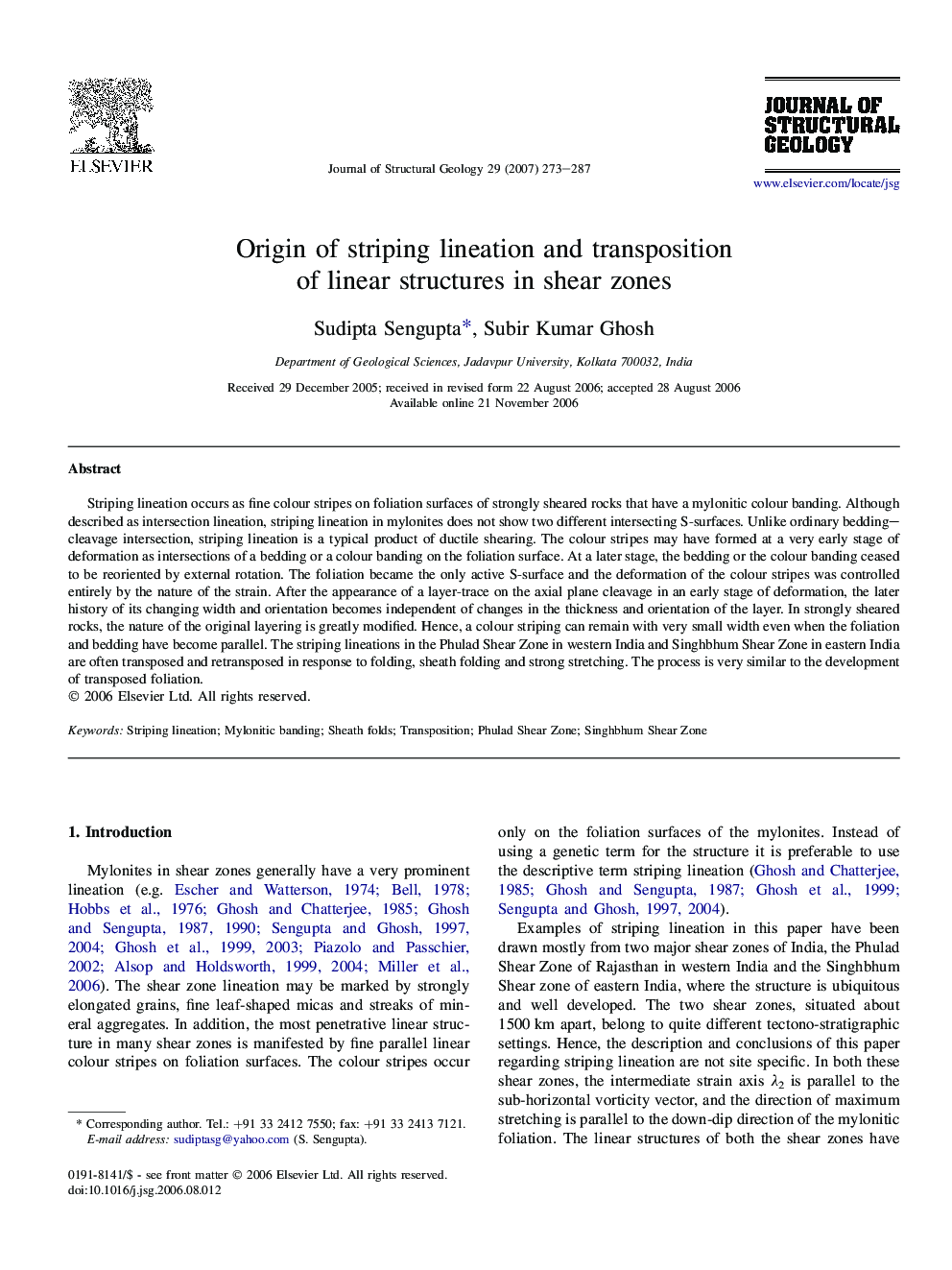| کد مقاله | کد نشریه | سال انتشار | مقاله انگلیسی | نسخه تمام متن |
|---|---|---|---|---|
| 4734226 | 1357080 | 2007 | 15 صفحه PDF | دانلود رایگان |
عنوان انگلیسی مقاله ISI
Origin of striping lineation and transposition of linear structures in shear zones
دانلود مقاله + سفارش ترجمه
دانلود مقاله ISI انگلیسی
رایگان برای ایرانیان
موضوعات مرتبط
مهندسی و علوم پایه
علوم زمین و سیارات
زمین شناسی
پیش نمایش صفحه اول مقاله

چکیده انگلیسی
Striping lineation occurs as fine colour stripes on foliation surfaces of strongly sheared rocks that have a mylonitic colour banding. Although described as intersection lineation, striping lineation in mylonites does not show two different intersecting S-surfaces. Unlike ordinary bedding-cleavage intersection, striping lineation is a typical product of ductile shearing. The colour stripes may have formed at a very early stage of deformation as intersections of a bedding or a colour banding on the foliation surface. At a later stage, the bedding or the colour banding ceased to be reoriented by external rotation. The foliation became the only active S-surface and the deformation of the colour stripes was controlled entirely by the nature of the strain. After the appearance of a layer-trace on the axial plane cleavage in an early stage of deformation, the later history of its changing width and orientation becomes independent of changes in the thickness and orientation of the layer. In strongly sheared rocks, the nature of the original layering is greatly modified. Hence, a colour striping can remain with very small width even when the foliation and bedding have become parallel. The striping lineations in the Phulad Shear Zone in western India and Singhbhum Shear Zone in eastern India are often transposed and retransposed in response to folding, sheath folding and strong stretching. The process is very similar to the development of transposed foliation.
ناشر
Database: Elsevier - ScienceDirect (ساینس دایرکت)
Journal: Journal of Structural Geology - Volume 29, Issue 2, February 2007, Pages 273-287
Journal: Journal of Structural Geology - Volume 29, Issue 2, February 2007, Pages 273-287
نویسندگان
Sudipta Sengupta, Subir Kumar Ghosh,